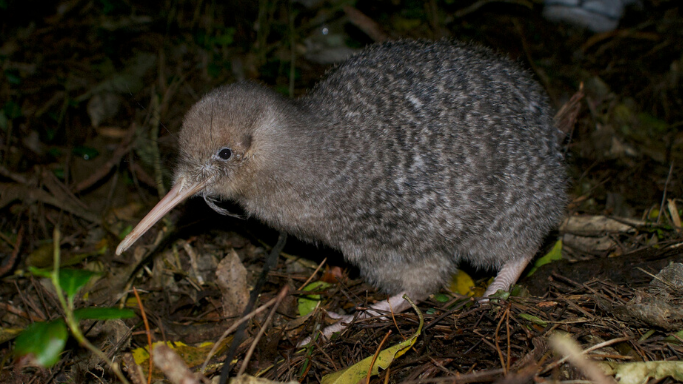Birds can spend a significant portion of their lives at roosting sites – up to two thirds of their time – so it makes sense that suitable sites are important to them. With translocation being a key strategy in rare species management, it would be good to know what features our bird species value in a good roost site. If we know what they like, we can ensure their new home after translocation ‘meets expectations’.

What, for example, does a kiwi value in a burrow site? Researchers Sarah Jamieson et al looked into the burrow preferences of North Island Brown Kiwi in a paper published last year in the Wilson Journal of Ornithology.
“Providing adequate roosting habitat can play a vital part in assisting the recovery of many threatened species, as having access to suitable roosting habitat can influence the likelihood a bird will settle in a particular area, and even increase its probability of survival. Unfortunately, there is often a paucity of information regarding the roosting preferences of many threatened species, thus adding to the challenges of trying to provide for their recovery. There is limited information about roosting ecology of kiwi (Apteryx spp.) in the literature.”
The authors begin with some background on the history of our iconic birds. The population comparisons make interesting reading.
“Kiwi are medium-sized (2.0–2.8 kg), nocturnal, flightless birds endemic to New Zealand. Since the colonization of New Zealand by humans, kiwi populations have drastically declined, resulting in all five recognized species being considered threatened or near threatened (IUCN 2012). Prior to human settlement, their total numbers were estimated to be in the millions; however, currently there are believed to be less than 80,000 individuals left in the wild. Habitat loss and predation by introduced mammals have played key roles in their decline, resulting in kiwi occupying less than 17% of their historical range. A large part of their recovery strategy has focused on securing habitat where predator densities are low and/or where it is feasible to control predator numbers through trapping/poisoning. Furthermore, kiwi are often translocated in hopes of re-establishing or supplementing populations in these areas.”
Ponui Island in the Hauraki Gulf was selected for the study site.
“Ponui Island is typical of much of New Zealand; it is primarily composed of livestock farms (sheep and cattle) with expanses of pasture interspersed with large gullies of regenerating forests. Small swamps are often associated with the lower reaches of these forest patches. Unlike mainland New Zealand, the only introduced predators on the island are feral cats (Felis catus) which are not a threat to adult kiwi. There is an estimated density of 1 kiwi per hectare.”
Kiwi were first removed from their burrows, measured and fitted with a radio transmitter. The subsequent study took place over a two year period from May 2010 to February 2012 with 41 adult, non-breeding kiwi being intensely tracked in order to discover their daytime roosting behaviour.
“We collected 3,997 roosting locations in three different macro-habitat types (scrub, forest, and swamp) and described 223 roosting burrows in the forest macro-habitat. Overall, we discovered that kiwis were roosting generalists; three quarters of the study population was found in more than one macro-habitat and just 5% used only a single type of micro-habitat.”
The researchers did, however, identify some clear preferences.
“On a macro-habitat level, kiwi preferred forest habitat over scrub or swamp. Furthermore, on a micro-habitat level, they preferred roosting inside trees, either living or dead, and holes in the ground over roosting in decomposing vegetation or holes associated with creeks. The least preferred micro habitat type consisted of overhangs produced by ground slips. Kiwis were most likely to use long burrows with small entrances that were oriented downhill. Our findings suggest that priority should be given to protecting mixed landscapes with large, mature, dynamic native forests.”
The full research report is published in the Wilson Journal of Ornithology and is freely available through Researchgate.
Roosting Preferences of North Island Brown Kiwis (Apteryx mantelli) (2016)

